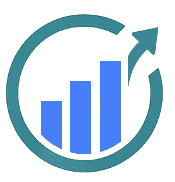- The “Futures Wheel” is a strategic thinking tool developed by Jerome Glenn, a futurist and co-founder of The Millennium Project think tank. This simple tool can be used to examine the complex, sometimes difficult to project ripple effects that changes can create. Its application includes strategic planning, foresight exercises, and scenario development. It has also proved a robust way for change agents to assess the likely implications of organizational transformations.
A form of structured brainstorming, the Futures Wheel allows groups of stakeholders to visually explore both the direct and indirect consequences of changes. By exploring the successive effects of change, the tool increases understanding of potential positive and negative impacts that may arise.
The Futures Wheel can be applied for multiple purposes, such as:
- Visualizing the primary, secondary, and tertiary consequences of a change or event.
- Exploring the potential effects of current decisions or trends.
- Recognizing risks, opportunities, and unforeseen consequences linked to new strategies.
- Anticipating challenges, disruptions, and new possibilities that may emerge from a proposed change.
Using the Futures Wheel is very straightforward. All that is needed is a group of engaged stakeholders and a whiteboard (the larger the better). Start by selecting the change to explore, which will serve as the central idea at the wheel’s center.
Begin brainstorming the immediate effects of the change by identifying the primary impacts likely to occur directly from it. These make up the first-tier consequences. After capturing the first-tier consequences, expand the discussion to identify the second-tier effects related to each primary impact; that is, identify the consequences that could arise as a result of the first-tier outcomes coming into fruition. Finally, probe the third-tier effects, continuing the process to identify the tertiary consequences resulting from the secondary impacts. A single spoke of your completed wheel will look something like this:

Here is a Futures Wheel completed to the second tier:

Once the wheel has been fully populated, the group can analyze the various connections and trends to look for patterns, unintended consequences, and both potential positive and negative outcomes. The nodes can also be scored for probability and concern to identify positive pathways to pursue and negative pathways to avoid.
The Futures Wheel is a dynamic and effective tool for anticipating the cascading effects of specific changes or decisions. It offers change agents a fast, structured, and creative method for discovering the potential risks and opportunities inherent in any change.
Want to dive deeper into how to apply the Futures Wheel to navigate the complexities of a change or transformation? Comment or message me.
